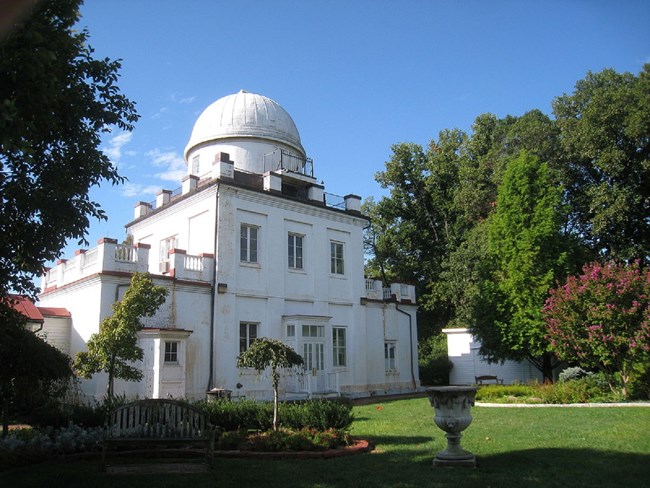Last updated: June 26, 2018
Thing to Do
Visit Volta Laboratory & Bureau

Built in 1893, the Volta Laboratory and Bureau building served as a place for Alexander Graham Bell to test new technology to aid Deaf Americans. Bell was influenced to pursue a career in deaf education by two important women: his mother and his wife. His mother, Eliza Bell, had almost full loss of hearing, yet she still enjoyed music by feeling the beat of the instruments through the floor. She instilled in her son a curiosity for how sounds were produced which eventually led him to pursue a career as an inventor and educator.
In his late 20s, Alexander Graham Bell took a job teaching Deaf students how to lip read. One of his students was Mabel Gardiner Hubbard, his future wife. She was an important influence on her husband and his work, and she supported him emotionally and financially. The two eventually married in 1877 and had 4 children. Two years after marrying, the couple moved to Washington, DC.
Around this time, Bell invented the speaking telegraph or telephone and was awarded the Volta Prize of 50,000 francs by the French government. He went on to establish the Volta Bureau, which was intended "for the increase and diffusion of knowledge relating to the Deaf." In 1893 Bell constructed this neoclassic yellow brick and sandstone building to specifically house the institution. Today the Alexander Graham Bell Association for the Deaf and Hard of Hearing operates out of the Volta Bureau building reminding all who visit of Bell’s influential research.

CC0
Explore More!
After your visit to the Volta Laboratory & Bureau, take a five minute walk to the Georgetown University Astronomical Observatory at the juncture of 37th and O Streets NW. Completed in 1844, the observatory is the third oldest in the United States. Some of the most notable astronomical research of the nineteenth and twentieth centuries was conducted at this location.
While the field of astronomy is often associated with men, women contributed to the field and made groundbreaking discoveries. Vera Rubin’s research is one example of how women contributed to the field. Rubin originally wanted to attend Princeton University, but the school only accepted male students. Instead, she enrolled in Georgetown University’s astronomy program and received her PhD in 1954.
Entering Georgetown’s doctoral program at 23, Rubin was already a mother of one and was pregnant with her second child. She went on to have four children, all while making some of the most groundbreaking research of the twentieth century. Her work revealed evidence of dark matter. Scientists believe dark matter makes up about 80-90% of the universe. In 1993, Rubin was awarded the National Medal of Science by President Bill Clinton and her work continues to inform our understanding of space today.
While the Georgetown University Astronomical Observatory contributed to new discoveries, growing light pollution from Washington, DC limited viewing from the observatory. Georgetown eventually closed its Department of Astronomy in 1972. A year later the observatory was listed on the National Register of Historic Places.
Sources:
Overby, Dennis. “Vera Rubin, 88, Dies; Opened Doors in Astronomy, and for Women.” New York Times (Dec 27, 2016),
https://www.nytimes.com/2016/12/27/science/vera-rubin-astronomist-who-made-the-case-for-dark-matter-dies-at-88.html
“Georgetown University Astronomical Observatory,” DC Historic Sites, accessed May 10, 2018,http://historicsites.dcpreservation.org/items/show/773.
https://www.nps.gov/people/maria-mitchell.htm
https://www.npr.org/sections/thetwo-way/2016/12/26/507022497/vera-rubin-who-confirmed-existence-of-dark-matter-dies-at-88
https://www.amnh.org/explore/resource-collections/cosmic-horizons/profile-vera-rubin-and-dark-matter/
